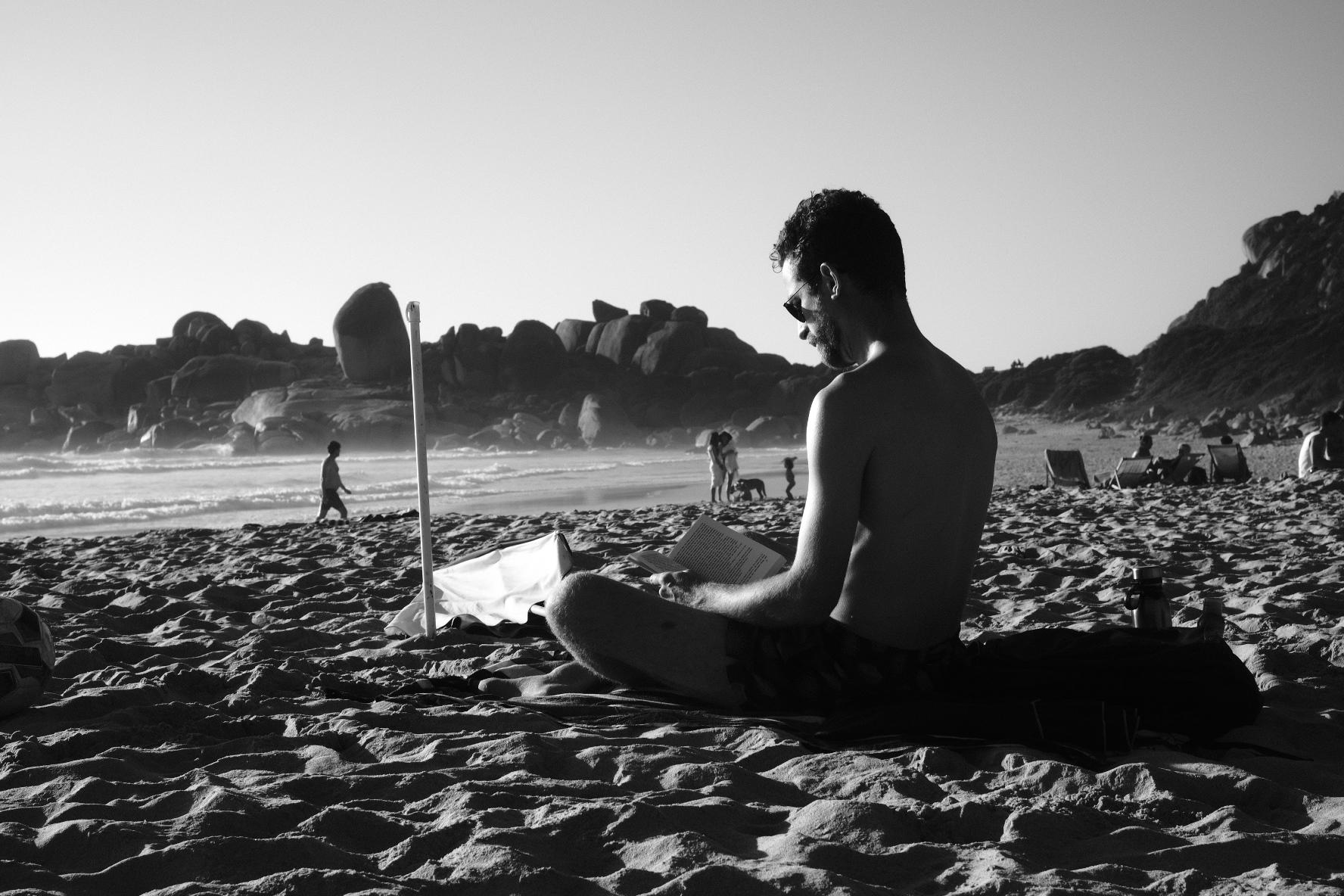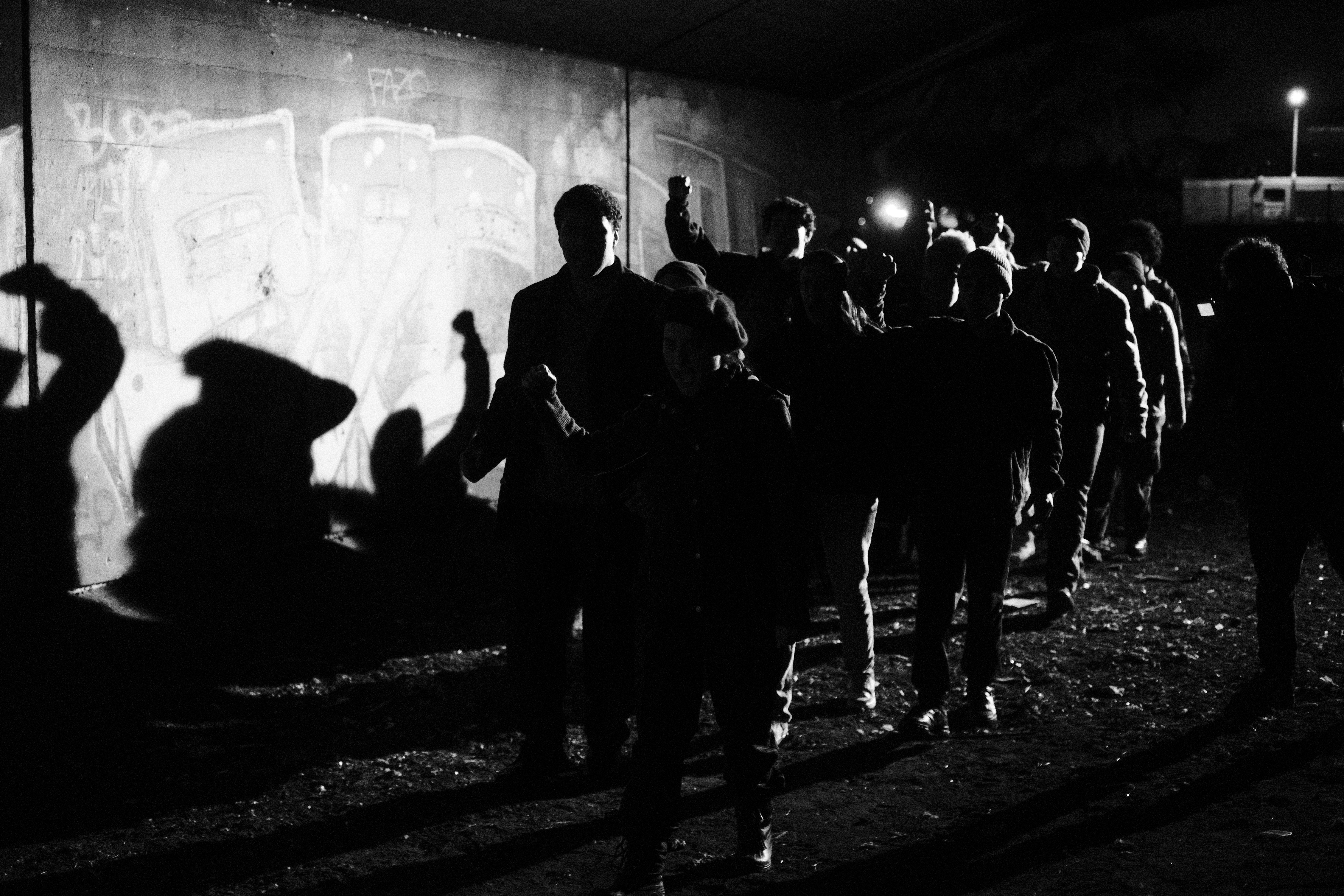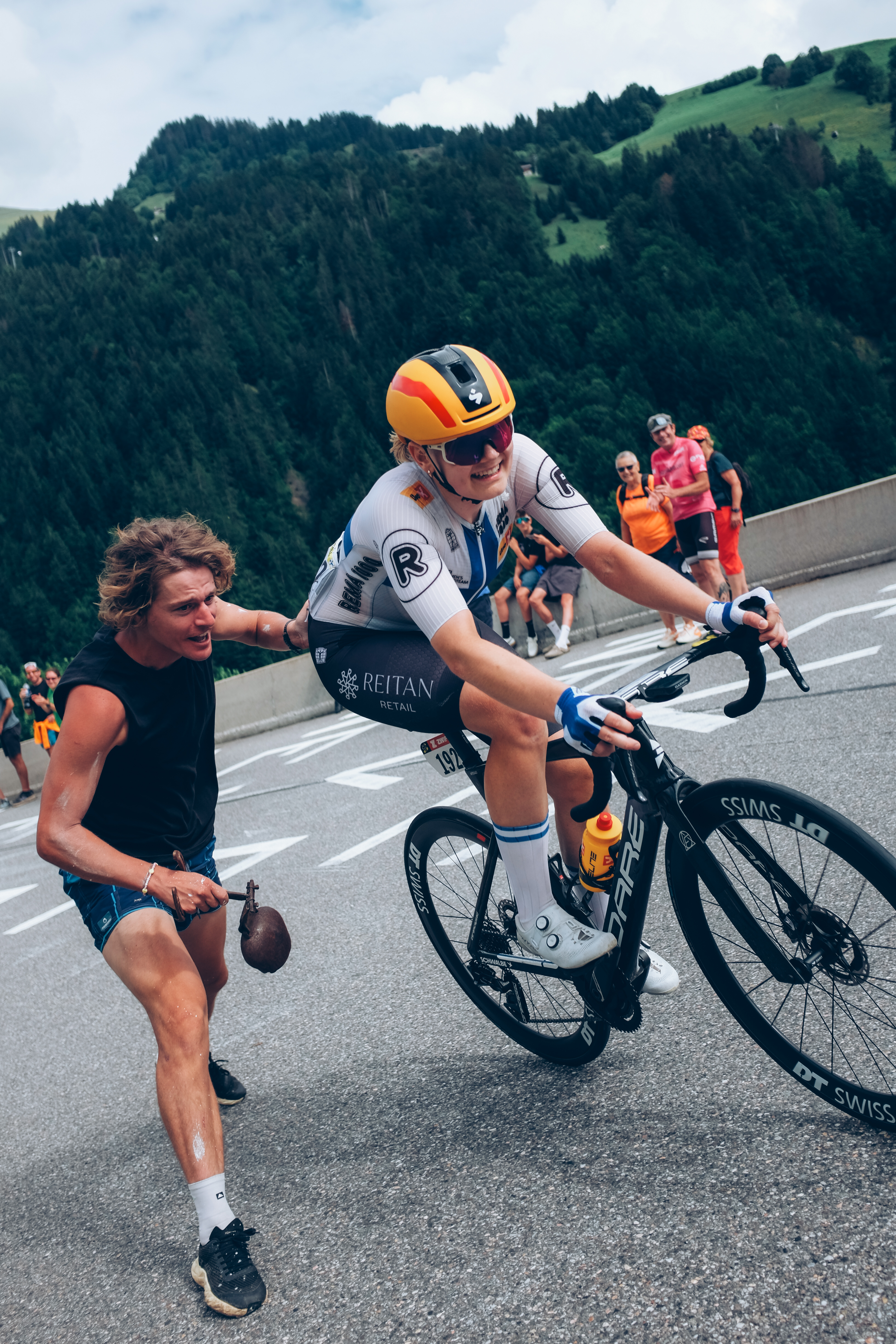TAKE TEN: AJ Jardien
Cape Town-based AJ Jardien is a lover of film, film cameras, film simulations and, of course, Fujifilm. For this Take Ten feature we chat about his Night Crawlers project, how film made him a better photographer and his favourite vintage Fujinon glass.
How did you get into photography?
By mistake! I was trying to learn manual exposure for video and accidentally ended up taking some of the best photos I’ve taken up until that point.
My younger childhood was captured mostly on 110 format point-and-shoots, which sparked my fascination with cameras and documenting life. It led me to save up and buy a point-and-shoot of my own at the start of high school.
I wasn’t interested in learning anything about photography besides how to make photos look more pleasing through better composition. This changed when I got into video, which led me to sell my point-and-shoot and buy my first interchangeable lens mirrorless camera. My reason? Because the man on the internet said so.
What he didn’t tell me was that I shouldn’t blow all my money on a camera and have no budget left for lenses. I eventually saved up enough money to buy an adapter and an old lens from the 60s. Fun fact, AF didn’t exist back then. Focus pulling became an intriguing game for me, but I didn’t quite figure out exposure yet, causing me to mistakenly take photos out on walks when trying to learn video. I was doing street photography before I even knew it existed. The photographic flame was ignited in me and still burns to this day.
As a lover of film as much as digital, do you ever use the film simulations on your Fujifilm?
I shoot RAW + JPEG and only ever use the RAW files when I’m doing paid work, and even then, I will still use a film sim as a base for editing. I’ve made a few custom film simulation recipes that I use mostly for all my personal work, but also for paid work. I’ve made a custom sim to cover just about any shooting scenario or environment I could find myself in.
I like experimenting in photography. With my film work, it’s everything from mixing different light sources, film stocks and scanning setups, all the way to expired film and its tumultuously unpredictable results.
With my digital work, it’s film simulations. Fujifilm’s tremendous history in the photography space really shines through in their colour science. The fact that they’re the only manufacturer still around today who previously made their own cameras, lenses and film stocks is a testament to their dedication to giving photographers what they need, and ultimately results in a system that works exceptionally well. The humble film simulation is an amalgamation of this.
You also started the awesome Night Crawlers community in Cape Town. Tell us more.
Night Crawlers was born out of necessity. I was looking for a community that fulfilled a specific set of requirements. A community where creatives can feel comfortable with being themselves; where their style of shooting can evolve rather than regress; one that welcomes experimentation; and that shows that failure is an accepted stepping stone in the process of succeeding rather than admonishing individuals for “not doing it right”.
A community that is educational while also being fun. One that has organic growth, that doesn’t care about the type of gear you use but rather encourages people to learn how to squeeze every drop of value out of what they already have. One that promotes success through acquiring knowledge and application thereof, allowing individuals to open doors of opportunity for themselves. A community that encourages social skills development while also offering an expansive networking platform, providing a collaborative environment for creatives of various kinds. A strong, diverse and supportive community where you can learn and grow with like minded individuals.
I couldn’t find it, so I created it.
Night Crawlers is so much more than a conventional community, it’s a testing ground, whether it is to find a fresh perspective, test a camera and/or its capabilities, up your skill level or even just learn the basics. Regardless of your background, age or skill level, you’ll always fit in.
It is a creative hub – we have photographers (street, portrait, events etc.), videographers, cinematographers, graphic designers, models, musicians and everything in between.
No matter your platform or medium, if you’re looking for inspiration or want to be a part of a community truly like no other, Night Crawlers is where you need to be. There is no sign-up/registration fee. All you need is a positive attitude and to attend one of our events like our Night Crawlers evening photo walks, or our Light Crawlers early morning walks.
Does this sound interesting to you? Pull through, let’s Crawl.
As a lover of vintage cameras, you must have been picky about selecting a digital camera. What drew you to Fujifilm?
What initially drew me to Fujifilm was their glass. I was in the process of switching systems from a brand I used for years because the prices of their optics were becoming more ridiculous with every new release.
I was about to switch to a different manufacturer when the affordability of XF glass caught my attention. I thought it too good to be true but nevertheless gave it a chance by getting my hands on some rental Fujifilm gear. Upon rigorous testing of my go-to focal lengths in the Fujinon line-up, something else now piqued my interest – the quality of the glass, regardless of the price, was astounding. This alone was enough to make me switch systems and once I did so I realised how good their colour science is.
I’ve used the Fujifilm system for years now and have since bought over a dozen and used over two dozen different Fujifilm cameras ranging from their ultra-compact X-10 all the way to their premium flagship GFX cameras, each having their own purpose respectively. As I grew with their line-up I was continually impressed.
What draws me to the system now is their timeless design, amazing colours (and the best B&W I’ve seen yet, even SOOC) and their legendary X-Trans sensors. It also just makes sense to me as a film photographer, to use digital cameras that offer me a similar experience.
Do you have a favourite Fujifilm camera and lens?
Considering that I spend a lot of time using film cameras that have optical viewfinders, no screens whatsoever and are very tactile, the answer is elementary – the Fujifilm X-Pro3. Duratect silver, to be exact. It is my favourite digital camera that I’ve ever owned or used. Its sleek, yet spartan design gives me everything I need to create as a photographer while looking absolutely beautiful doing it.
I don’t believe Fujifilm has said so officially but its design reminds me of the legendary Fujifilm TX-1. Looks are a big part of camera buying decisions, at least for me, because if I think that if a camera looks good, it makes me want to use it more.
The X-Pro3 has become an extension of my arm over the past few years of owning it. I like that the screen is a hidden flip down screen as it encourages the photographer to use the viewfinder. On that note, a viewfinder that can switch from a crystal-clear optical viewfinder to a high-resolution electronic viewfinder with just a flick of a switch is so crazy to me, even after all these years!
The X-Pro3 does all of this while still being super robust and fully weather-sealed, yet so compact and lightweight with an X-Trans IV sensor at the centre of it all. It’s only natural that I pair it with glass that matches its aura.
The Fujinon XF35mmF1.4 R is my favourite lens out of the line-up. It’s a cult classic and for reasons too many to mention, so I’ll list a few:
The focal length itself is very versatile.
- A 50mm equivalent allows you to use it like a 35mm if you take a step back but also has more compression so it can be used like a short tele if you move slightly closer to your subject.
- The lens renders like a vintage lens but with contemporary sharpness.
It has beautifully soft bokeh and can even look painterly if the right conditions are met. - Its colours are vibrant but not oversaturated.
- It’s dreamy wide open while still not being soft.
- Stopped down, it blows you away with detail but still holds an edge with character.
- While there are lenses that focus faster, the focus is not slow by any means.
Its micro contrast blows me away, especially for B&W work.
The XF 35mm f1.4 is glued to my X-Pro3. I can comfortably say that in Fujifilm’s line-up, if this was my desert island setup, I’d blissfully accept it.
Have you ever had the opportunity to shoot with vintage Fujinon glass?
I have shot some vintage Fujinon glass and actually own two fast fifties for different use-cases.
The Fujinon 55mm f1.8 is one of the best product photography lenses of its time. Its colour reproduction is top tier, and stopped down it is super sharp. The EBC coatings were good even some 40+ years ago! The bokeh it produces is also very different from modern lenses and looks almost like someone has replaced the OOF areas of the images it renders with watercolour paint.
The Second vintage Fujifilm optic I own is the Fujinon 55mm f2.2. Wide open, it gives you aethereal images that have an overall glow to them with blooming highlights and soft, pastel colours. It’s like the lens has a built-in diffusion filter. Stopped down, it’s very sharp, with colours that come alive with warmth and vibrancy. The cherry on top for me though is its bokeh. This lens is a soap bubble bokeh beast. A true art lens.
What’s on your photography bucket list?
As of now, I only have about four items on my bucket list. Firstly, I want to explore the Western Cape to its fullest potential. There are so many diverse and stunning destinations that, depending on where you go, it can feel like you’re going to different corners of the globe. I want to do conceptual shoots at various locations in the WC so that I can show what my home province has to offer. From the seaside cliffs to the mountainous regions and everything in between.
I also would like to experience shooting for a magazine. Whether it’s street, portraiture or fashion, it’s all in my wheelhouse. Ideally, I’d shoot this on medium format.
Third up is shooting sports and wildlife on film. I have a love for pulling focus and I get in the zone when there are scenarios where timing is critical to get the shot, so the combined challenge of getting my exposure settings just right, pulling focus as well as timing the shot perfectly really excites me. I plan to shoot some soccer or rugby on a really old camera paired with some super telephoto glass soon.
Last on my list (for now) is going to Japan. I’d love to do a couple of street photography sessions there, do a series on mount Fuji, check out the local camera boutiques and just nerd out on some gear for a bit. I have a soft spot for a few old Japanese manufacturers who made my favourite cameras and lenses of yesteryear, so I’d love to see where it all began and maybe even do some bargain hunting for a grail or two while I’m there.
What’s one thing that immediately improved your photography?
Purposefully limiting yourself is a criminally underrated tool in your creative arsenal. In the long run, it’s way better to do this than buying gear that is specced to the brim – you can buy the most expensive gear in the world and it won’t make you a better photographer, but equipping yourself with knowledge and learning the hows, whens and whys of application certainly will.
I limit myself because it allows for creative growth and pushes me past boundaries I never even knew existed until I was pushing right up against them. Limiting myself to manual focus-only allowed me to discover more abstract ways of using focus, different methods of focussing as well as developing a deeper understanding of aperture and the relationship of it both with me and various other exposure tools.
Limiting myself to one focal length for a given period allowed me to learn the characteristics that focal length has to offer, while enabling me to very quickly decipher the scenarios that specific focal length would be best suited to, but also how I could use it in more unconventional ways. Limiting myself to only shoot B&W for over a year helped tremendously with my vision of compositions, framing, shapes, forms and tuned my eye to light in ways I never would have learned if I only stuck to colour photography.
Speaking of which, shooting B&W also helped me in unimaginable ways with my colour work as colour stood out to me more than ever and I could now pair colours and tune them more intricately. It helped me understand the light values of different colours which makes a huge difference both in the field and in editing. When colour is stripped away, light is what remains. Why not learn how to use it to your advantage, right?
Limitation breeds creativity. Anyone can take good photos, only a few can make good photos.
Why do you like shooting film? Do you think it made you a better photographer?
I love shooting film for so many reasons and almost all of them made me a better photographer. Film photography is only limited by how creative you are, and I like the premise of that challenge.
It teaches you to read light with your eye and calculate exposure without the need of a light meter. It teaches you to visualise your end result without seeing it beforehand. It teaches you to work on timing because, more often than not, you only have that one chance to nail the shot. It teaches you not to be reliant on gear for good work but rather on your own skill set. It also teaches you that you don’t need the latest and greatest equipment to create good work. And once again, it can be limiting in ways you won’t expect, causing you to think on your feet and break through your creative ceilings.
These are all very pragmatic reasons, and some will argue that these feats can be achieved on digital as well, but it’s not the same. I would also argue that film teaches us these things faster as you’ll remember the screw up job much more when you have 36, 12 or even just 10 shots and each one counts (and costs) versus just rifling off 200 almost identical shots on digital. On modern cameras you can crank the ISO so high that you can literally see in pitch black. On film, you’re stuck mid-roll on 200 ISO film at night and you really want to shoot, now what? The wheels start turning.
In an era where instant gratification runs rife in society, film detoxifies you. Got the shot? Go on with life rather than stare at yet another screen. In an era where everything is fast-paced, film slows you down. If you don’t believe me, try using a TLR (twin lens reflex) camera for a day.
Post-processing is also almost non-existent compared to the usual digital workflow (Fujifilm JPEG shooters, you understand). You choose your filmstock based on the type of photography you’re doing, the colour or tonality you’d like, the ISO of your choosing and the grain structure you desire. Boom. Colour grading, done. The most I’ll do in post is maybe colour-correct once in a while and a slight crop and straighten every now and then, but that’s pretty much it. How refreshing, especially to photographers who know how demanding photography can be.
Film photography is also just really fun and enjoyable. It can also be therapeutic. The beautiful and/or quirky designs of cameras. The illustrious history of manufacturers. The tactile nature of all the gears, levers, wheels, buttons, knobs, doors and rings. The imperfections in lenses. The weird and wonderful types of bokeh and colour renditions. The rush of the hunt for your unicorn setup, or better yet, a bargain.
The fact that the process can be as fast or as slow as you want it to be, without worrying too much about clinical results. All of these are just some of the reasons why film photography is amazing. Give it a go, I highly recommend it.
Where can people find more of your work?
Instagram: @eyeofalchemy but I also am currently shooting content for my old YouTube channel, which I’m in the process of reviving. You can find me there at Eye of Alchemy. I recently started a Tiktok account but I’m still very new.















